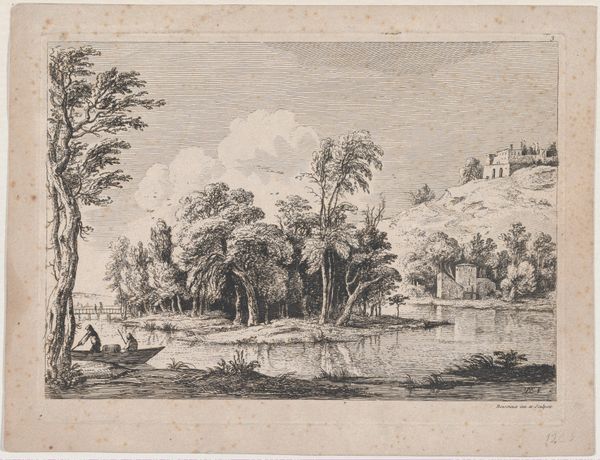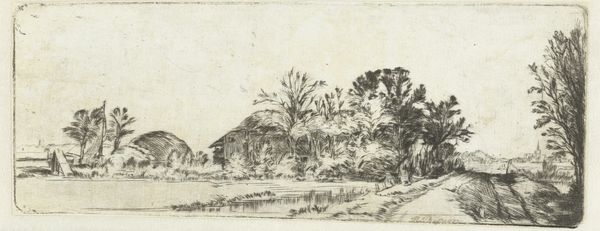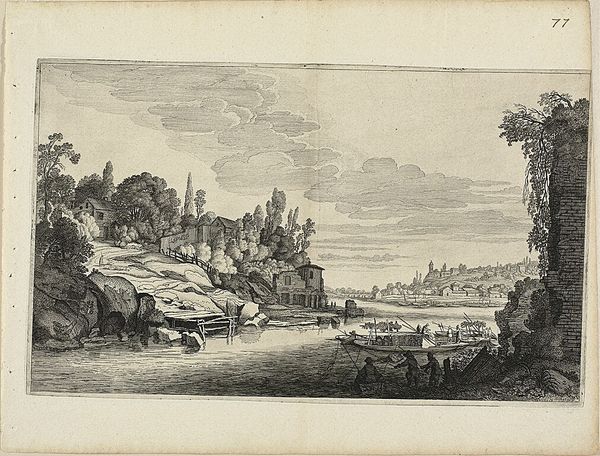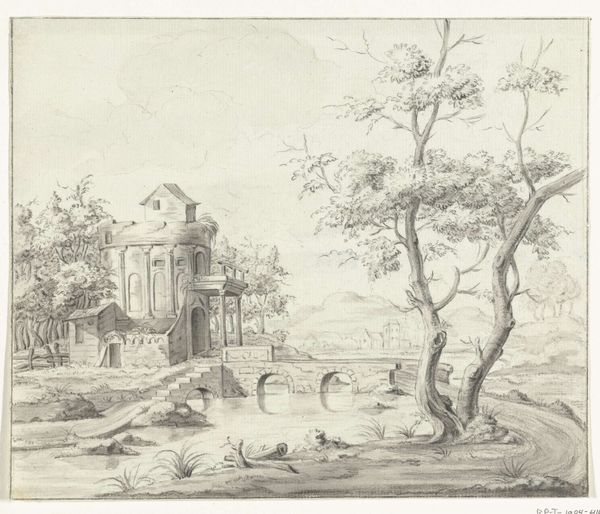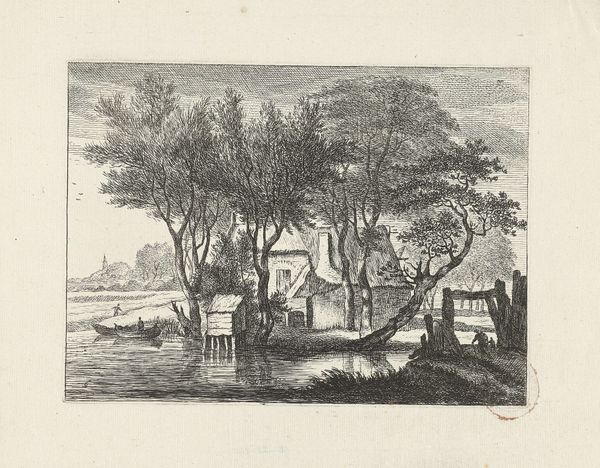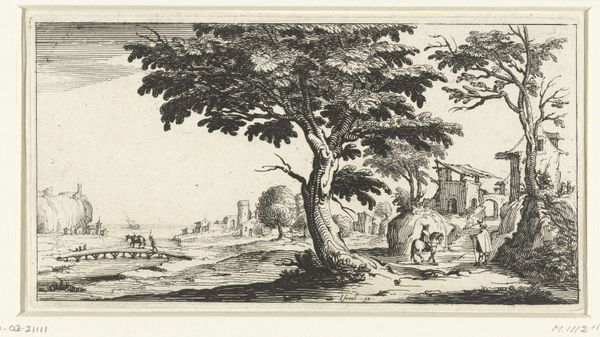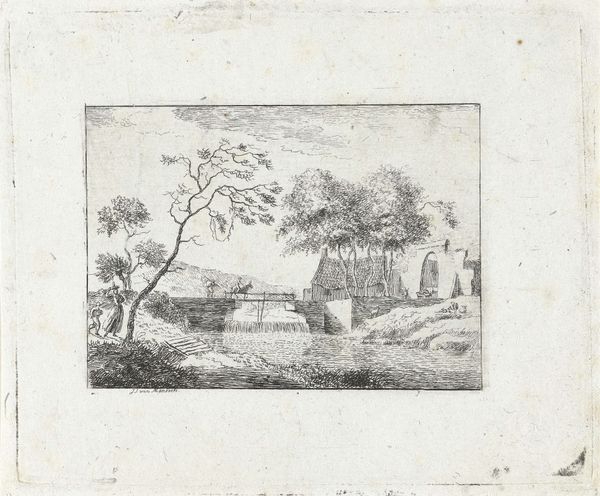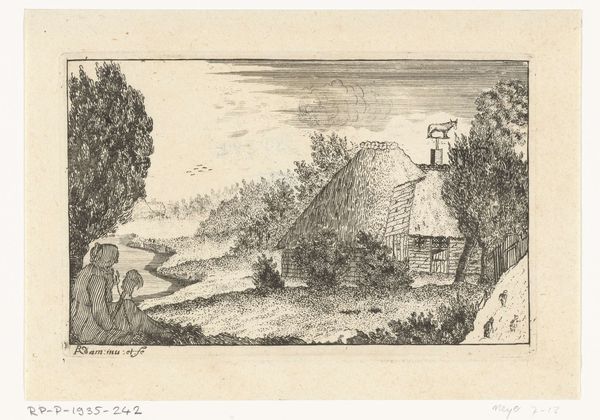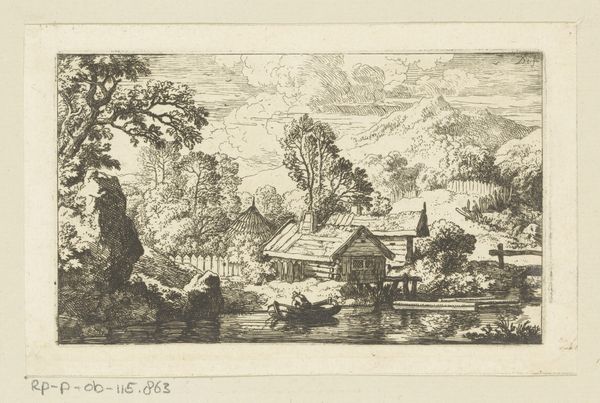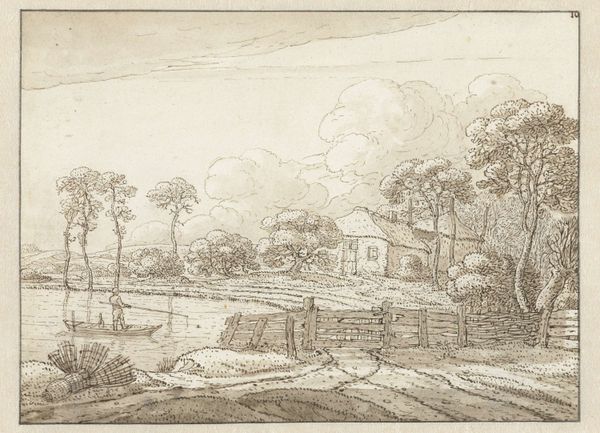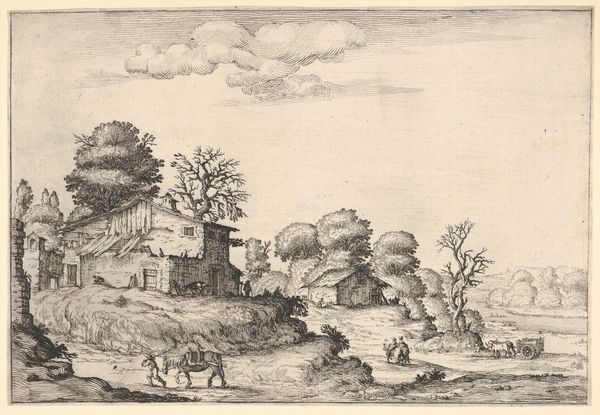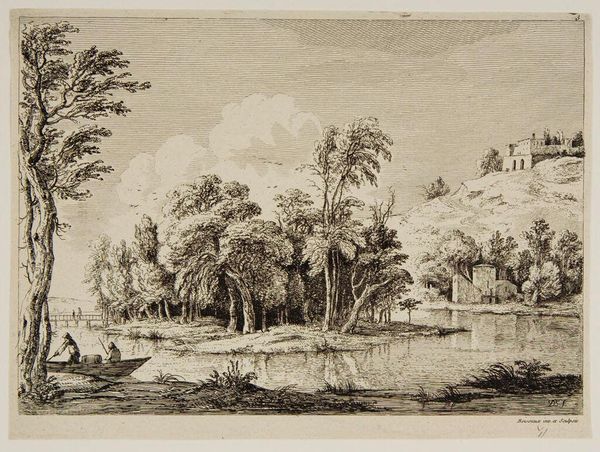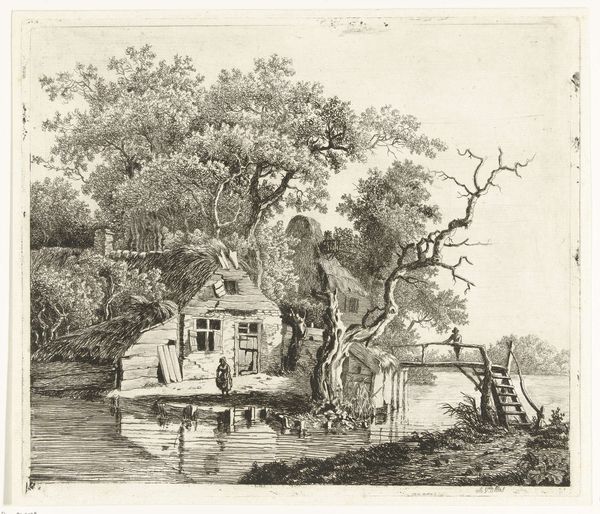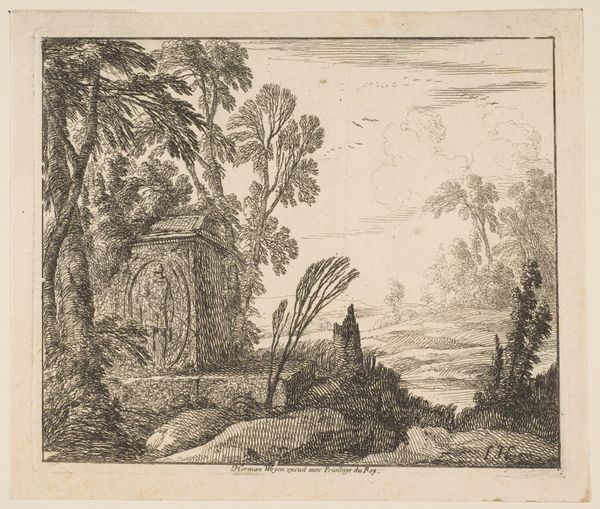
drawing, print, etching, ink, pen
#
drawing
#
baroque
#
pen drawing
# print
#
etching
#
landscape
#
ink
#
rock
#
pen
Dimensions: height 84 mm, width 158 mm
Copyright: Rijks Museum: Open Domain
Curator: This delicate ink and pen drawing before us, titled "Landscape with a Monastery on a Rock," dates from sometime between 1630 and 1660. The work, residing here at the Rijksmuseum, is attributed to François Collignon and employs both etching and print techniques. Editor: My first thought? Isolation. This whole scene—the stark lines, the lone figures, the improbable monastery perched on that rock—it breathes a very specific kind of melancholy. Curator: Indeed, the isolation feels deliberate. Consider how monasteries often function, historically, as spaces of both spiritual refuge and detachment from worldly affairs. Notice too the visual hierarchy; the monastery isn’t just *on* a rock, but dominates it, symbolizing a separation, a transcendence, maybe even a visual assertion of power over the natural world. Editor: The setting is crucial here, of course. It presents us with not one, but several modes of transit and passage, from the boat and foot-travel in the background, to the more prominent bridge occupied by the man carrying goods; there's even the figure who has paused at the banks to fish... These elements, along with the landscape details and monastery location atop a precipice, evoke the sublime, doesn't it? Curator: The 'sublime' is an interesting lens, I think it certainly fits. The viewer would have certainly been reminded of religious symbolism present in landscape imagery during that era. The bridge, especially, resonates. It functions not only as a physical connector but as a powerful metaphor of the earthly and the divine. It visually prompts the audience to contemplate the interplay of heaven and Earth, human action and higher purpose, just as any number of emblem books circulating would have done at the time. Editor: And even further back; just think of the iconic imagery in the visual trope of ‘the pilgrim’s progress’ through life, bridging two landscapes. Collignon seems conscious of this very potent metaphor in visual and social culture. Curator: Precisely. And this awareness enriches our experience. Even though Collignon might be relatively obscure, he engages with universal visual allegories. We find these kinds of cultural continuities echoed and transformed across many different places and times. Editor: A quiet reflection on connection and disconnection; it makes this modest print far bigger than it seems.
Comments
No comments
Be the first to comment and join the conversation on the ultimate creative platform.
